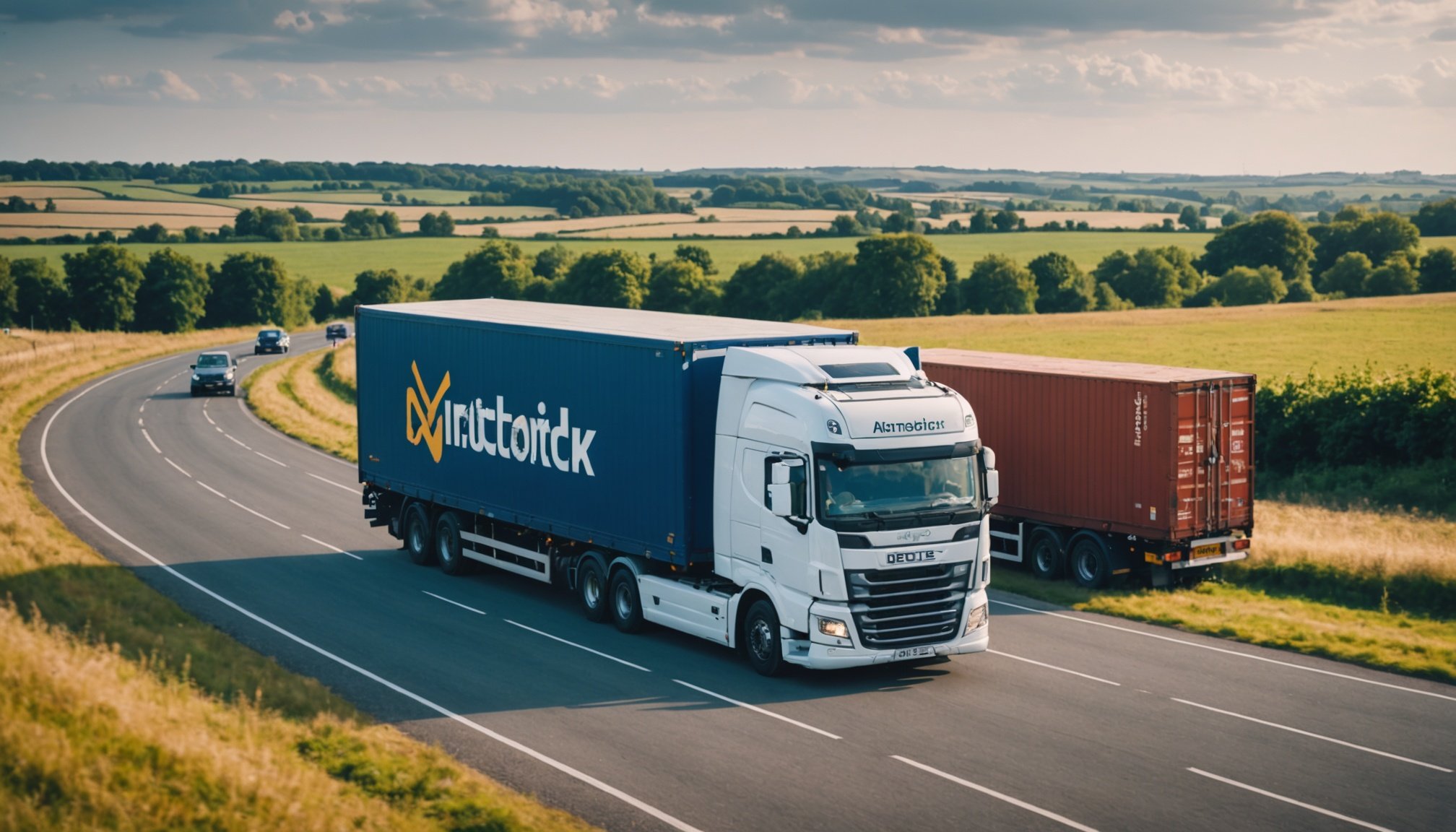Maximizing Route Efficiency: Cutting-Edge AI and Machine Learning Tactics for UK Logistics Firms
In the fast-paced world of logistics, efficiency is key to staying ahead of the competition and ensuring customer satisfaction. With the advent of artificial intelligence (AI) and machine learning (ML), logistics companies in the UK are leveraging these technologies to optimize their operations, particularly in route planning and management. Here’s a deep dive into how AI and ML are revolutionizing route efficiency in the logistics industry.
The Role of AI in Route Optimization
AI has become a game-changer in the logistics sector, especially when it comes to route optimization. By analyzing vast amounts of data, AI algorithms can predict traffic patterns, identify the most efficient routes, and adapt to changing conditions in real-time.
Have you seen this : Mastering Project Management: UK IT Firms’ Ultimate Guide to Harnessing Agile Success
Real-Time Traffic Monitoring and Management
One of the core components of AI-driven route optimization is real-time traffic monitoring. IoT sensors and cameras are deployed throughout urban infrastructure to collect data on traffic conditions, vehicle locations, and environmental factors. This data is transmitted to a central database where it is processed and analyzed using AI algorithms to generate actionable insights for traffic management and optimization[1].
For instance, UPS uses an AI-driven system called ORION (On-Road Integrated Optimization and Navigation) to optimize delivery routes for its fleet of trucks. ORION analyzes various data points such as traffic patterns, weather conditions, and delivery schedules to choose the fastest and most cost-effective routes. This system has saved UPS millions of dollars in fuel costs and significantly reduced its carbon footprint[2].
Also read : Revolutionizing Wind Energy: How AI is Enhancing Renewable Power in the UK
Adaptive Traffic Management Strategies
AI and machine learning techniques enable adaptive traffic management strategies that respond to dynamic traffic patterns and delivery demands. These strategies involve real-time adjustments to traffic signal timings, route optimization for delivery vehicles, and coordination with other components of the urban logistics network to ensure efficient operation[1].
Machine Learning Algorithms for Dynamic Route Optimization
Machine learning models are at the heart of dynamic route optimization. Here are some key algorithms and their applications:
- Genetic Algorithms: These algorithms mimic natural selection processes to iteratively find optimal or near-optimal solutions for route planning. They are particularly effective for solving complex optimization problems[5].
- Machine Learning: Machine learning algorithms analyze historical data and learn from patterns to make predictive routing decisions. These algorithms can adapt over time, improving their accuracy and efficiency[5].
- Heuristic Algorithms: These algorithms provide quick, practical solutions to routing problems by using rules of thumb or educated guesses, making them suitable for scenarios where computational speed is essential[5].
- Linear Programming: This mathematical approach helps in optimizing a given objective, such as minimizing travel time or fuel consumption, subject to a set of constraints like delivery time windows or vehicle capacity[5].
Predictive Analytics in Supply Chain Management
Predictive analytics plays a crucial role in optimizing supply chain operations, including route optimization. Here’s how it works:
Predicting Traffic Patterns and Delivery Routes
Predictive analytics uses techniques such as data mining, time series forecasting, and regression analysis to predict potential disruptions and customer demand fluctuations. By factoring in real-time traffic, weather, and road conditions, predictive analytics optimizes delivery routes, improving delivery speed and reliability[3].
For example, a recent study by Kearney found that 77 percent of logistics partners invest in predictive analytics to boost profitability. This investment allows businesses to stay ahead of challenges and ensure smooth operations by predicting and mitigating potential issues in the logistics network[3].
Integration with IoT Devices
The integration of IoT devices further enhances predictive analytics by providing real-time shipment monitoring. This gives businesses greater control over logistics, enabling them to make informed decisions based on real-time data.
| Technique | Description | Benefits |
|---|---|---|
| Data Mining | Analyzing large datasets to identify patterns and trends. | Helps in predicting customer demand and potential disruptions. |
| Time Series Forecasting | Predicting future values based on historical data. | Optimizes delivery routes by anticipating traffic and weather conditions. |
| Regression Analysis | Modeling the relationship between variables. | Identifies the most efficient routes and times of day for deliveries. |
| Optimization Algorithms | Finding the best solution among a set of possible solutions. | Ensures that logistics operations are optimized for efficiency and cost-effectiveness. |
Autonomous and Connected Vehicles
Autonomous and connected vehicles are another key component in the AI-driven logistics framework. Here’s how they contribute to route efficiency:
Autonomous Navigation and Operation
Autonomous vehicles use AI algorithms and sensor data to navigate urban environments safely and efficiently. They can operate independently, reducing the need for human intervention and minimizing the risk of human error. These vehicles are integrated into the broader logistics network, communicating with traffic management systems and other vehicles to optimize their operations[1].
Communication and Coordination
Autonomous and connected vehicles are equipped with advanced communication systems that enable them to interact with other vehicles, traffic management systems, and infrastructure components. This communication facilitates coordination and cooperation among different elements of the logistics network, optimizing routes, avoiding congestion, and ensuring timely deliveries[1].
Practical Insights and Actionable Advice
For logistics companies looking to implement AI and ML for route optimization, here are some practical insights and actionable advice:
- Invest in Data Collection Infrastructure: Deploy IoT sensors and devices to collect real-time data on traffic conditions, vehicle locations, and environmental factors. This data is crucial for AI algorithms to make informed decisions[1].
- Implement Machine Learning Algorithms: Use machine learning algorithms to analyze historical data and make predictive routing decisions. These algorithms can adapt over time, improving their accuracy and efficiency[5].
- Integrate Predictive Analytics: Use predictive analytics to predict potential disruptions and customer demand fluctuations. This helps in optimizing delivery routes and ensuring smooth operations[3].
- Adopt Autonomous and Connected Vehicles: Consider integrating autonomous and connected vehicles into your logistics network. These vehicles can operate independently and communicate with other elements of the network to optimize routes and ensure timely deliveries[1].
Case Study: UPS and ORION
UPS’s ORION system is a prime example of how AI can be used to optimize delivery routes. Here’s a detailed look at how ORION works:
- Data Analysis: ORION analyzes various data points such as traffic patterns, weather conditions, and delivery schedules to choose the fastest and most cost-effective routes.
- Real-Time Adjustments: ORION makes real-time adjustments to routes based on dynamic traffic patterns and delivery demands.
- Fuel Savings: ORION has saved UPS millions of dollars in fuel costs and significantly reduced its carbon footprint.
“As we continue to invest in AI and machine learning, we’re seeing significant improvements in our operational efficiency and customer satisfaction,” said a UPS spokesperson. “ORION is just one example of how these technologies are transforming our logistics operations.”
Future Trends in Route Optimization
As AI and ML continue to evolve, we can expect even more advanced and intelligent route optimization solutions. Here are some future trends to watch out for:
- Advanced Machine Learning Models: Future machine learning models will be more sophisticated, analyzing vast amounts of data to uncover hidden patterns and trends, allowing for more accurate and efficient route planning[5].
- Increased Use of Autonomous Vehicles: Autonomous vehicles will become more prevalent, operating independently and communicating with other elements of the logistics network to optimize routes and ensure timely deliveries[1].
- Enhanced Predictive Analytics: Predictive analytics will become more advanced, predicting potential disruptions and customer demand fluctuations with greater accuracy, enabling businesses to stay ahead of challenges and ensure smooth operations[3].
In conclusion, AI and ML are revolutionizing route efficiency in the logistics industry. By leveraging these technologies, logistics companies in the UK can optimize their operations, reduce costs, and enhance customer satisfaction. Whether it’s through real-time traffic monitoring, predictive analytics, or the use of autonomous vehicles, the future of logistics is undoubtedly driven by AI and ML. As businesses continue to invest in these technologies, we can expect to see even more innovative solutions that drive operational efficiency and excellence in the logistics sector.











